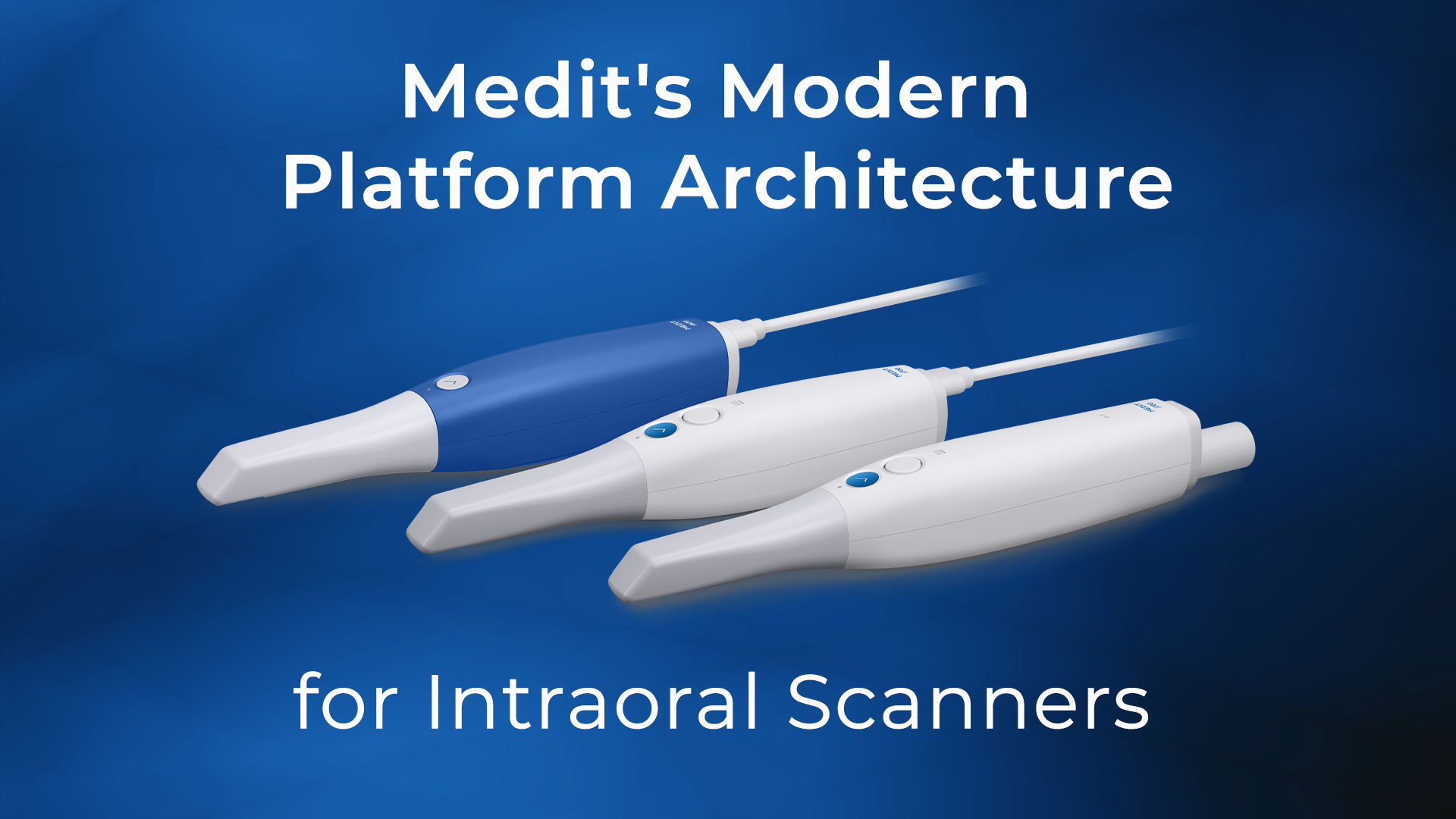There’s a little-known fact about the technology architecture of Medit scanners.
In the beginning, Medit made a platform architecture decision that was different from the accepted norm at the time.
Medit chose not to do any image processing onboard their scanners because they knew that computing power grows at a constant rate. Similar to how CPUs have always doubled in transistor count every two years according to Moore’s law since 1975.
This constant growth in computing power lets Medit's scanning software utilize GPU computing for fast data processing (scanning, reconstruction, etc.) but also for many AI functions.
For example, Medit software classifies teeth, soft tissue, tongue, fingers, metal, etc. using a deep learning algorithm in real-time. It uses that information in various filtering and processing.
One application of this is it can apply different scanning/processing parameters to teeth and gums. It is also utilized in Medit’s Apps such as Model Builder, Ortho Simulation, or Temporaries for faster and more automated data processing.
The newly added Smart Shade Guide feature was also possible thanks to the powerful AI engine. Without any hardware changes or an external color calibration tool, your existing i700 Medit scanner can get more accurate shade data with their AI algorithm. An additional feature like this in the past would have only been possible by releasing a new scanner model.
According to Medit’s Chief Technology Officer Michael Lee, the AI engine’s improvement is possible “because of the huge collection of data in Medit’s Cloud platform.” This scan data is processed in in line with all the relevant regulations to access the data for AI engine training.
Is Medit - The 'Tesla' of Digital Dentistry?
Until Medit disrupted the industry, all the scanners had more parts onboard the scanner - often with some moving.
That computing power in the scanner meant higher prices because the device was more costly to manufacture and also meant limited performance increases over time.
A Medit scanner is a simple raw data acquisition tool and all of the image data processing is offloaded to the computer it’s connected to using the Medit Scan for Clinics software.
Interestingly, because of this platform architecture decision, the scan performance of the Medit i500 doubled over the first two years and the processing speed increased by 450%!
So, due to constant computer speed increases and software optimization, the day you buy a Medit scanner will be the slowest it will ever be.
“Not only does Medit upgrade software on PC, they also provide some level of firmware upgrades, which enables more detail, connection stability, heat control, and a longer product life for our scanners - much like Tesla keeps upgrading their cars with software updates.
This scanner architecture has resulted in a significant change to all the Medit scanners PC system requirements with the most recent update to v2.6, as it’s all based on the PC and software. You now need a much less powerful computer to run the scanner than before which means reducing the total cost of ownership.
“It is true that you need a less powerful computer to get the full potential of our scanner and software. Nowadays, a PC costing as low as $1,500 USD will be sufficient,” said Michael Lee.
“However, our software also tries to fully utilize possible computing resources. So, if a user can afford a better computer, he or she can get better performance for the money.”
So we can still justify getting a super cool gaming computer if we want 😉
This is quite unlike other scanners which do some image processing onboard. While these scanners lessen the load on computers, it also means it’s very difficult to improve performance over time.
Durability is also impacted - something that is not often discussed but can prove to be extremely costly.
No one plans to drop a scanner, but unfortunately, it does happen.
Medit even mentioned in their recent launch that the scanner is more resistant to damage from drops. This is primarily due to the fact that there are no moving parts so you may be able to pick it up, calibrate and keep on scanning.
Now, we don’t suggest that you go and try and drop your scanner! But, it could mean the difference between a repair bill of $2,000 to $4,000 or not.
So, remember to consider the factors of performance and future upgrades, durability, and repair costs when choosing a scanner that doesn’t make it to the glossy brochure.
It seems that Medit really did introduce modern IT technologies to the medical device industry.
Want to see how all Medit's intraoral scanners compare? Check out our latest article.

